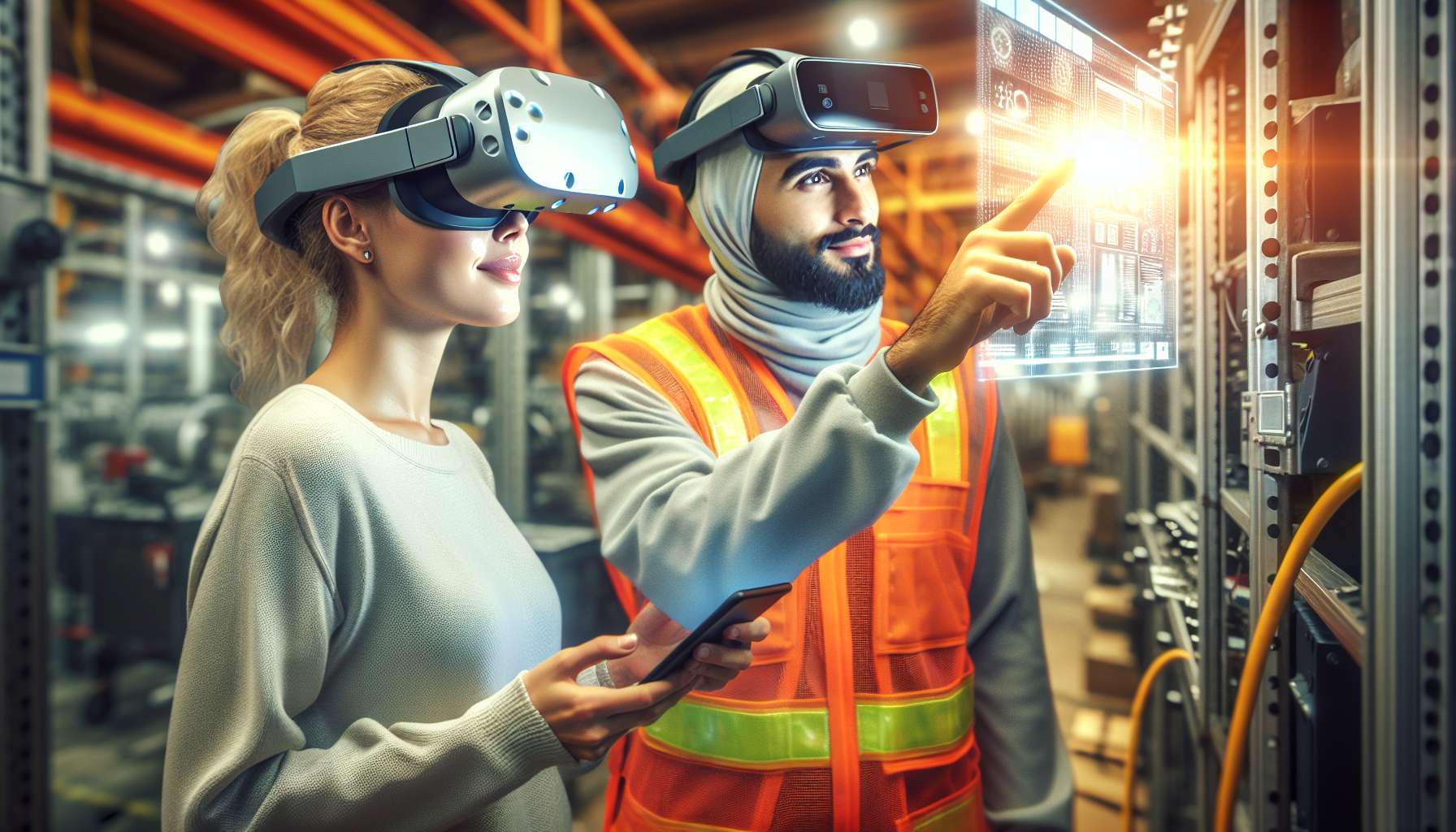Unlocking the Potential of Augmented Reality in Manufacturing
Manufacturing has always been at the forefront of technological advancements, constantly seeking ways to improve efficiency and productivity. In recent years, the integration of augmented reality (AR) has emerged as a game-changer in the industry, revolutionizing traditional manufacturing processes and unlocking new possibilities for enhanced productivity.
What is Augmented Reality?
Before we delve into the applications of AR in manufacturing, let’s briefly understand what augmented reality is. AR is a technology that overlays digital information, such as images, videos, or 3D models, onto the real world. By using devices like smartphones, tablets, or smart glasses, users can interact with virtual elements in their physical environment.
Enhancing Training and Onboarding Processes
One of the key areas where AR is making a significant impact in manufacturing is training and onboarding. Traditional training methods often involve lengthy manuals, classroom sessions, or shadowing experienced workers. AR offers a more immersive and interactive approach, allowing new employees to learn on the job with real-time guidance.
With AR, trainees can visualize complex machinery and processes through virtual overlays, step-by-step instructions, and interactive simulations. This not only reduces the learning curve but also minimizes errors and improves overall efficiency. By providing a hands-on learning experience, AR accelerates the onboarding process, enabling new employees to become productive more quickly.
Streamlining Assembly and Maintenance
AR is also transforming assembly and maintenance operations in manufacturing. By overlaying digital instructions onto physical objects, workers can easily follow assembly or repair procedures without the need for extensive manuals or external assistance.
For example, AR can guide workers through complex assembly processes by highlighting the correct parts, displaying instructions, and providing real-time feedback. This not only reduces errors but also speeds up the assembly process, leading to improved productivity and higher quality output.
Similarly, AR can assist maintenance technicians by overlaying diagnostic information onto equipment, enabling them to quickly identify issues and perform repairs. By providing real-time data and visual cues, AR minimizes downtime and enhances the overall efficiency of maintenance operations.
Optimizing Inventory Management
Inventory management is another area where AR is proving to be invaluable. By leveraging AR technology, manufacturers can streamline inventory tracking, reduce errors, and improve overall efficiency.
AR-powered smart glasses, for instance, can provide real-time information about inventory levels, locations, and product details. This enables workers to quickly locate and retrieve items, eliminating the need for manual searches and reducing downtime.
Furthermore, AR can assist in inventory replenishment by automatically detecting low stock levels and generating alerts. This proactive approach ensures that materials are always available when needed, preventing production delays and optimizing the supply chain.
Looking Ahead: The Future of AR in Manufacturing
The potential of AR in manufacturing is vast and continues to expand. As the technology evolves, we can expect to see even more innovative applications that further enhance productivity and efficiency.
For instance, AR can enable remote collaboration, allowing experts to provide real-time guidance to workers in different locations. This not only saves time and travel costs but also facilitates knowledge sharing and problem-solving.
Additionally, AR can be integrated with artificial intelligence (AI) to create intelligent systems that can analyze data, predict maintenance needs, and optimize production processes. By harnessing the power of AI and AR, manufacturers can achieve unprecedented levels of automation and efficiency.
Conclusion
Augmented reality is revolutionizing the manufacturing industry by enhancing training and onboarding processes, streamlining assembly and maintenance operations, and optimizing inventory management. As AR technology continues to advance, its potential for improving productivity and efficiency in manufacturing is limitless.
By embracing AR applications in manufacturing, businesses can stay ahead of the competition, reduce costs, and deliver high-quality products in a timely manner. The future is here, and it’s time for manufacturers to embrace the power of augmented reality.





